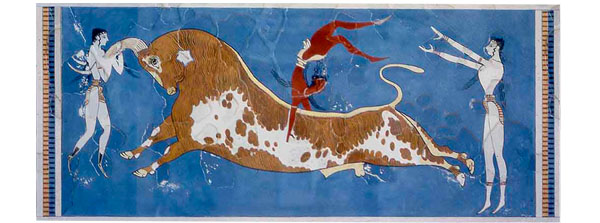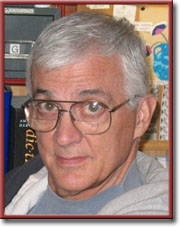Many but Not All: The Great Seal

Skip the B.S.
By Skip Eisiminger

“My old English teacher was not pulling anyone’s leg about the salad recipe; it’s in Virgil’s poem ‘Moretum.’ OK, maybe it wasn’t a Caesar salad, but the other two mottos on the Great Seal are drawn from pagan authors as well.” Skip Eisiminger
“Never ignore the fascinating surface in favor of the mere depths.”—Irving Howe
“E pluribus unum was originally a recipe for Caesar’s salad.”—Catherine Cooley
 CLEMSON South Carolina—(Weekly Hubris)—11/11/2013—Before you go any further, take a dollar from your billfold and send it to me at the address below.
CLEMSON South Carolina—(Weekly Hubris)—11/11/2013—Before you go any further, take a dollar from your billfold and send it to me at the address below.
Keep scrolling, you’re just scratching the surface.
Have you plumbed the depths?
OK, there’s no address, but if you fell for that, you’ll understand why the Great Seal of the United States has been a powerful magnet for the gullible for over two hundred years. From Masonic and Illuminati plots to hummingbirds, owls, and spiders in the margins of our currency, nothing has piqued the American suspicion of conspiracies more than the greenback, one of the few places where both sides of the Great Seal are displayed together.
In addition to the claptrap and hokum, the history of our seal is rich in legitimate interest. As with so much Americana, the story begins on July 4, 1776 with a resolution passed by the Continental Congress that “Dr. Franklin, Mr. J. Adams, and Mr. Jefferson be a committee, to bring in a device for a seal for the United States of America.”
Six weeks later, these gentlemen presented the Congress with, among others, a rough sketch showing a rifle-toting, buckskin-clad frontiersman and Lady Liberty leaning against a shield with the initials of the 13 original states and symbolic references to the six European countries most Americans emigrated from. Over the shield hovered an open eye framed by a triangle; below waved a banner inscribed E pluribus unum: “out of many, one.” Other suggestions included representations of Moses, Hercules, and the legendary founders of England, Hengist and Horsa, but the Congress was in no mood for biblical, mythic, or Tory allusions.
My old English teacher, incidentally, was not pulling anyone’s leg about the salad recipe; it’s in Virgil’s poem “Moretum.” OK, maybe it wasn’t a Caesar salad, but the other two mottos on the seal are drawn from pagan authors as well.
Not surprisingly, the disparate proposals of the first committee were politely tabled and, in 1780, a second committee was appointed. Its recommendation kept Lady Liberty but replaced the frontiersman with a near-naked Native American holding a bow and arrow. The shield was kept, but the states were now represented by 13 diagonal stripes which the committee borrowed in part from the newly adopted flag. Over the shield floated a constellation of 13 six-pointed stars. Gone were the references to Europe and E pluribus unum, which the committee replaced with the Latin for “Prepared in war and peace.”
Despite some last-minute changes, that rather aggressive design was also tabled and, two years later, a third committee took up the challenge. E pluribus unum returned in a waving banner, while Lady Liberty and a Minuteman stood precariously on another banner reading, “Virtue alone is unconquered.” Also back was the strange eye in a triangle, but it sat atop an unfinished pyramid.
A frustrated Congress dumped all three designs into the hands of Charles Thomson, the body’s secretary, who quietly eliminated the clutter but kept the tiny white eagle which had perched atop the shield in the third design. Thomson’s bald eagle now had E pluribus unum waving in its beak as well as an olive branch in its “dexter talon” and a clutch of arrows in the “sinister.”
William Barton, who had worked with the third committee and was now assisting Thomson, changed the angle of the eagle’s wings and the shield’s chevrons to vertical stripes. Over the years, a few other cosmetic changes have been made such as the mysterious switch from a right “eye of Providence” to a left eye in 1856 but, essentially, the Barton-Thomson design is what remains.

In a weak attempt to expose some skullduggery, an anonymous internet historian has invented a Jewish conspiracy. Allegedly, George Washington repaid the generosity of Haym Solomon, an American Jew who helped to bankroll the Revolution, by including 13 six-pointed stars in the design. When the second committee eliminated those stars, a cluster of 13 five-pointed stars forming a single Star of David was added. Furthermore, the eagle when turned upside down supposedly resembles a menorah. Overlooked is the fact that President Washington had very little influence on any of the committees. Moreover, some designs employed eight-pointed stars while others mix five- and six-pointers indiscriminately.
A great deal of ink has also been spilled over the eye in the triangle that caps the pyramid on the reverse side of the seal. It’s true that the Masons use the device, but it didn’t become common in their literature until 15 years after the Barton-Thomson design was accepted in 1782. However, as early as 1525, Jacopo Pontormo used the eye framed by a triangle to represent the Christian deity’s presence. And though it was ultimately rejected, a design submitted by the third committee had an eye without a triangular frame. One thing is clear, however: the eye is not Yahweh’s; it’s a representation of “Providence,” the Deist’s “first mover,” who made a perfect world and now enjoys oversight but otherwise is not involved.
One thing that has troubled me about the dollar’s design is the way the seal is split. Since English is read from left to right, a more logical arrangement would situate the eagle on the left over “The Great Seal” portion of the caption. My guess is that most Americans think the eagle alone is the Great Seal since the similar Presidential Seal decorates the presidential podium, airplane, and stationery. But as the Great Seal is displayed on the dollar, one reads the caption from left to right and the seal from right to left. We have Franklin Roosevelt to thank for this anomaly. For unknown reasons, he ordered the obverse to be placed on the dollar’s right and added the split caption.
In The Power of Myth, Joseph Campbell suggests that “MDCCLXXVI” or 1776 was placed at the base of the 13-layer pyramid because “when you add one and seven and seven and six you get 21, which is the age of reason, is it not?” Then he adds that 13 is the “number of transformation and rebirth.” When Bill Moyers gently reminds his guest that there were 13 original states, Campbell argues that the numbers are “not simply coincidental.” What utter nonsense from one of the great minds of the last century. There may be no disputing taste, but I hope one can still dispute sophomoric interpretations anchored in a cloud of speculation.
In 1945, Harry Truman rejected a proposal to turn the eagle’s head on the Presidential Seal toward the arrows and change the arrows to lightning bolts. Details have meaning, as Truman understood, and they can mean many things, but they cannot mean everything. To wit, there’s no good reason to think the bird’s nine tail feathers represent the Supreme Court.
![]()
Note: For more information, and illustrative graphics, regarding The Great Seal, go to http://en.wikipedia.org/wiki/Great_Seal_of_the_United_States.
2 Comments
Elizabeth Boleman-Herring
Skip, I’ve always found it fascinating how conspiracy theorists are especially drawn to un-parsed imagery. I cannot tell you how many crack-pots have floated this and that bit of nonsense to me about the dollar bill and the Great Seal over the years . . . which is why this piece of yours (and snopes.com, in general) bring/s such relief. :-)
Skip
Unparsed imagery, as you call it, is a Rorschach to the uninitiated, and the net has opened the door to millions who never had a voice.
Long live Snopes, and I don’t mean Flem.